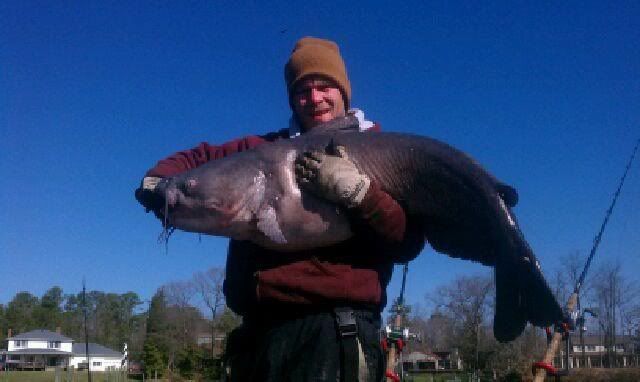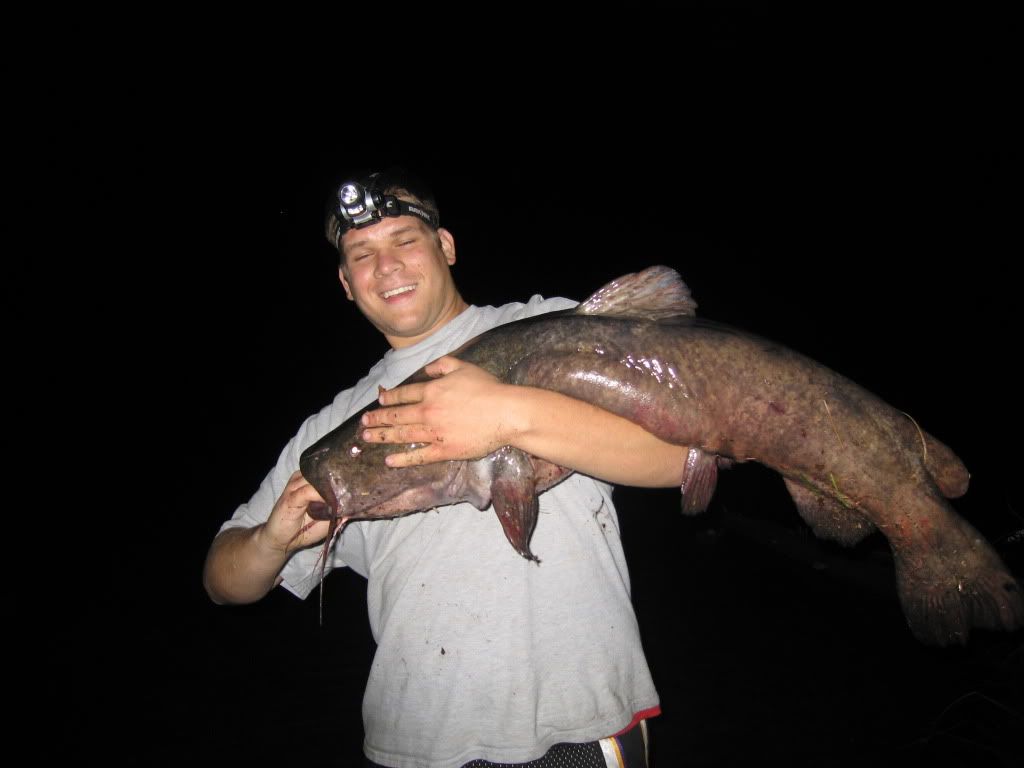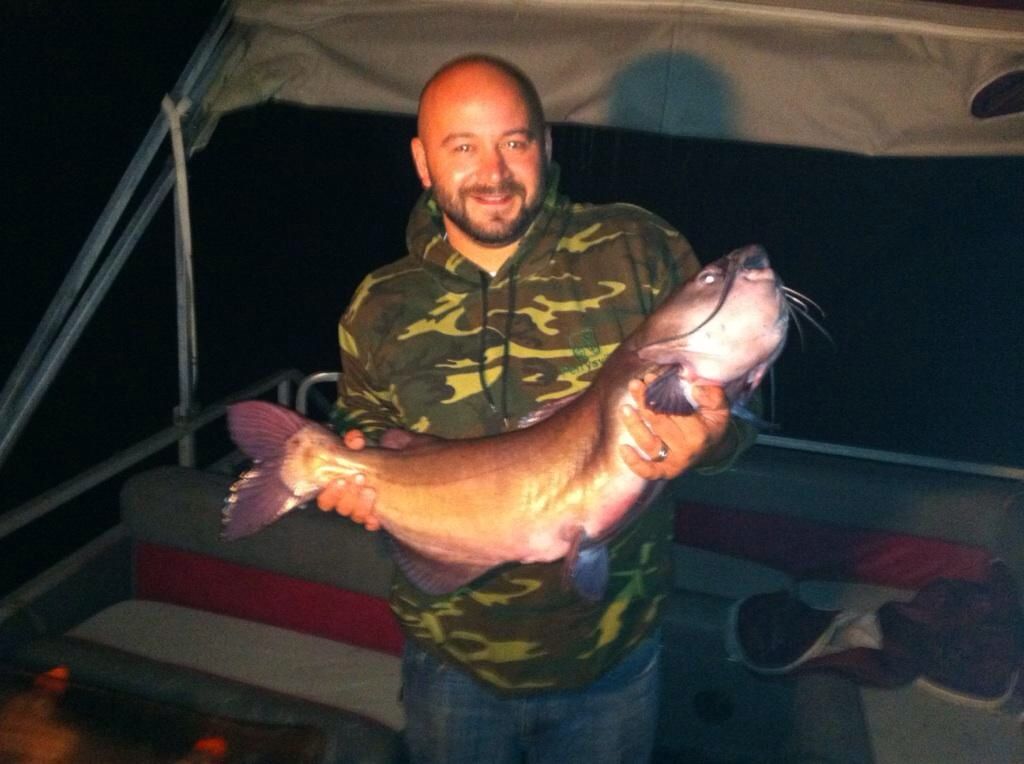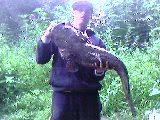Post by Catfishrollo on Feb 27, 2013 10:41:46 GMT -5
How many of you target river channel cats by knocking down the front door? What I mean by that is putting yourself as deep as possible in their holding zone. Many of these areas can be the nastiest exposed logjams or sometimes just submerged timber. However, the most important key that I always look for though is plenty of current. Current seems to be an essential part for packing numbers of fish in and along the structure. Another element that we prefer to look for is sand and gravel. Wooden structures layed up in sand and gravel with the current seem to have an advantage over those layed up on a mud bottom. We often still catch fish in there areas, but not the numbers.
Getting into these tangled messes can sometimes be tricky and often dangerous. Extreme caution should be used when trying to navigate a boat into these areas with fast current. I have seen people get their boats pushed up on logjams, and even capsized. Some of these areas are simply not worth the chance. What I usually do is nose up in the current using the motor to hold along these logjams as I survey if we can get into the area, but most importantly, do we have a safe way out? Once were into the area, we can often find a safe pocket or eddy that is off the current seam, and look to tie the bow nosed upstream off the boat on the structure. Very important not to ever get sideways, or try to anchor sideways when dealing with current.
Time to fish! We keep our rig simple when probing these logjams. Usually a 2 or 3 ounce egg sinker on the mainline, bead, and hook. (pref. a small 5 or 6/0 circle). Using a straight rig greatly reduces the amount of hangups. And allows us to fish more vertical dropping in crevace after crevace. Prefered bait is usually cut shad, or cut suckers, shiners, or chubs. However, chicken livers are a favorite at times as well. We usually try to fish the structure for 5-10 minutes. Usually, thats all thats needed to catch the active cats. Most of the time it doesn't take long to get a rod slammed as these fish are held virtually right under you. We used to think that by driving the boat right into their homes that it would scare the fish. But, that simply is not true. Lots of times these wood piles can layed up as shallow as 4 to 6 feet. But, the fish don't seem to mind.
Not all river systems are the same, and larger systems may not offer as many of these fast flowing areas with structure. However, with alittle bit of scouting you can usually find some areas that have enough of these characteristics to find structured channel cats. The river sytems we target offer alot of these areas, and we simply start up river and can keep jumping from jam to jam. By no means is this the only way to target channel cats. I thought I would just share alittle insight on how we fish for them during the warm water months! Goodluck.... rollo
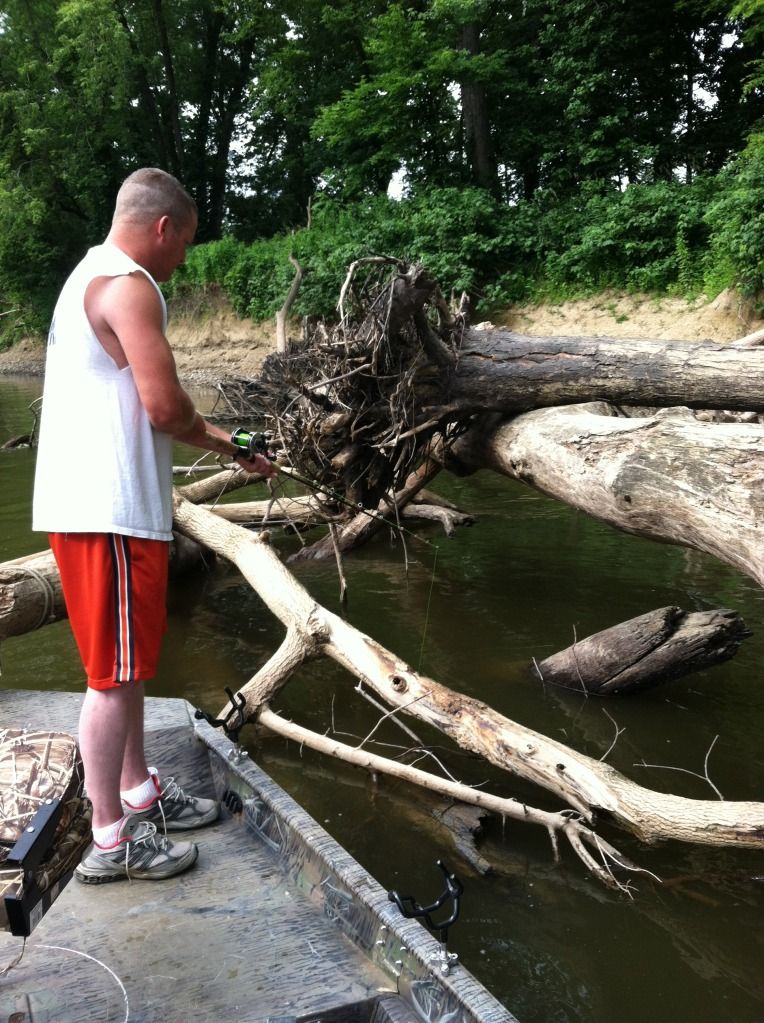

Getting into these tangled messes can sometimes be tricky and often dangerous. Extreme caution should be used when trying to navigate a boat into these areas with fast current. I have seen people get their boats pushed up on logjams, and even capsized. Some of these areas are simply not worth the chance. What I usually do is nose up in the current using the motor to hold along these logjams as I survey if we can get into the area, but most importantly, do we have a safe way out? Once were into the area, we can often find a safe pocket or eddy that is off the current seam, and look to tie the bow nosed upstream off the boat on the structure. Very important not to ever get sideways, or try to anchor sideways when dealing with current.
Time to fish! We keep our rig simple when probing these logjams. Usually a 2 or 3 ounce egg sinker on the mainline, bead, and hook. (pref. a small 5 or 6/0 circle). Using a straight rig greatly reduces the amount of hangups. And allows us to fish more vertical dropping in crevace after crevace. Prefered bait is usually cut shad, or cut suckers, shiners, or chubs. However, chicken livers are a favorite at times as well. We usually try to fish the structure for 5-10 minutes. Usually, thats all thats needed to catch the active cats. Most of the time it doesn't take long to get a rod slammed as these fish are held virtually right under you. We used to think that by driving the boat right into their homes that it would scare the fish. But, that simply is not true. Lots of times these wood piles can layed up as shallow as 4 to 6 feet. But, the fish don't seem to mind.
Not all river systems are the same, and larger systems may not offer as many of these fast flowing areas with structure. However, with alittle bit of scouting you can usually find some areas that have enough of these characteristics to find structured channel cats. The river sytems we target offer alot of these areas, and we simply start up river and can keep jumping from jam to jam. By no means is this the only way to target channel cats. I thought I would just share alittle insight on how we fish for them during the warm water months! Goodluck.... rollo







